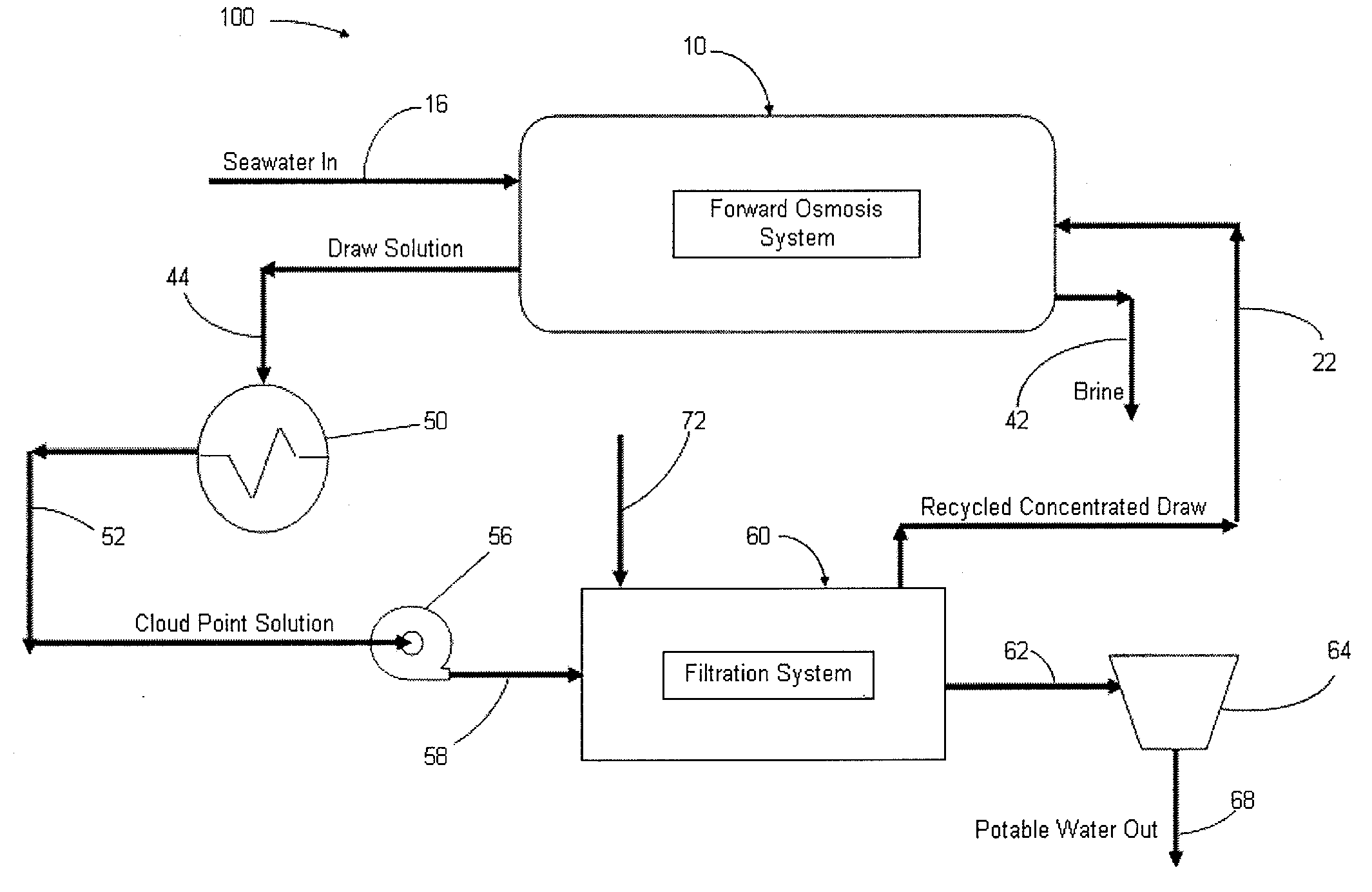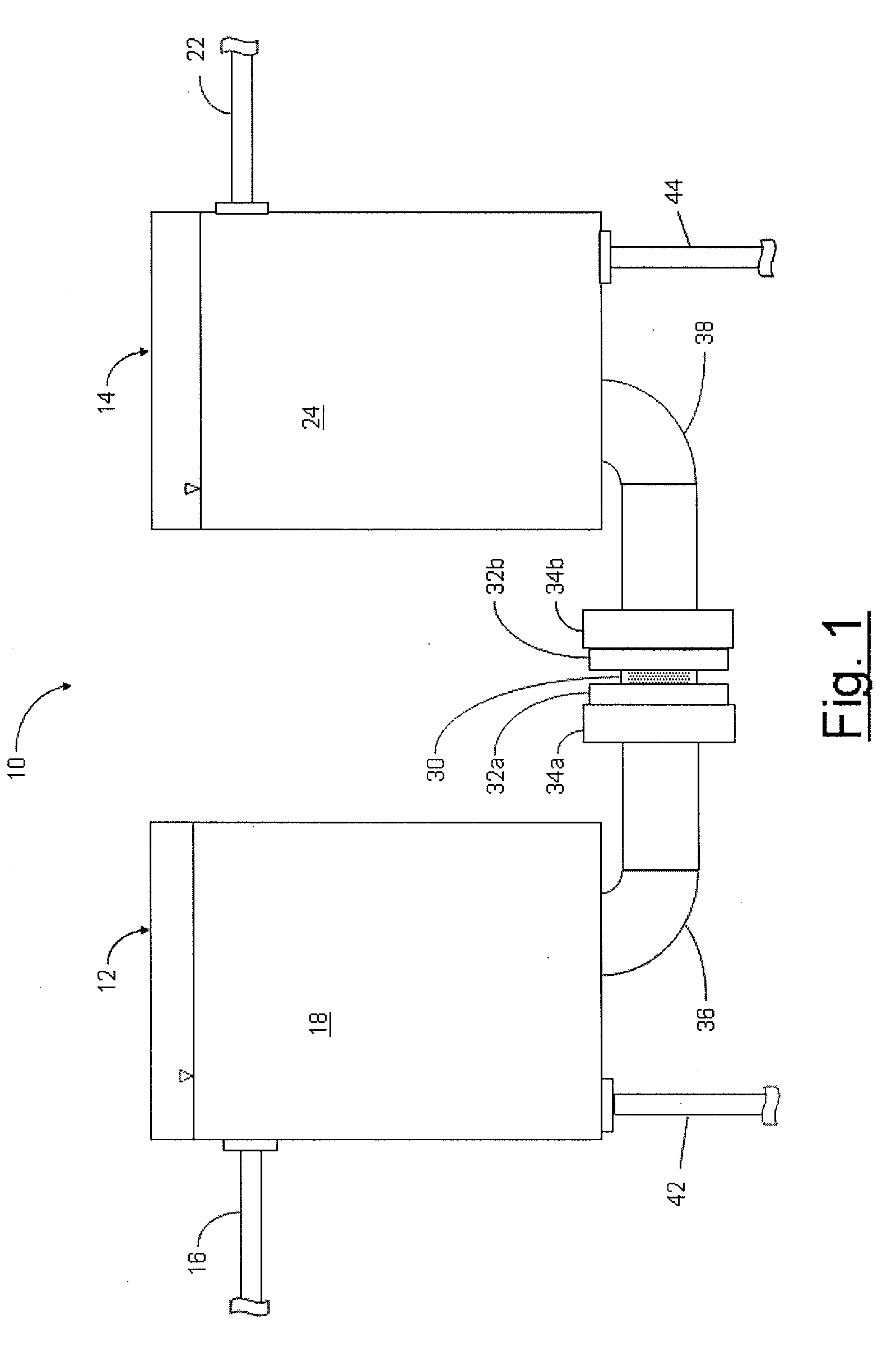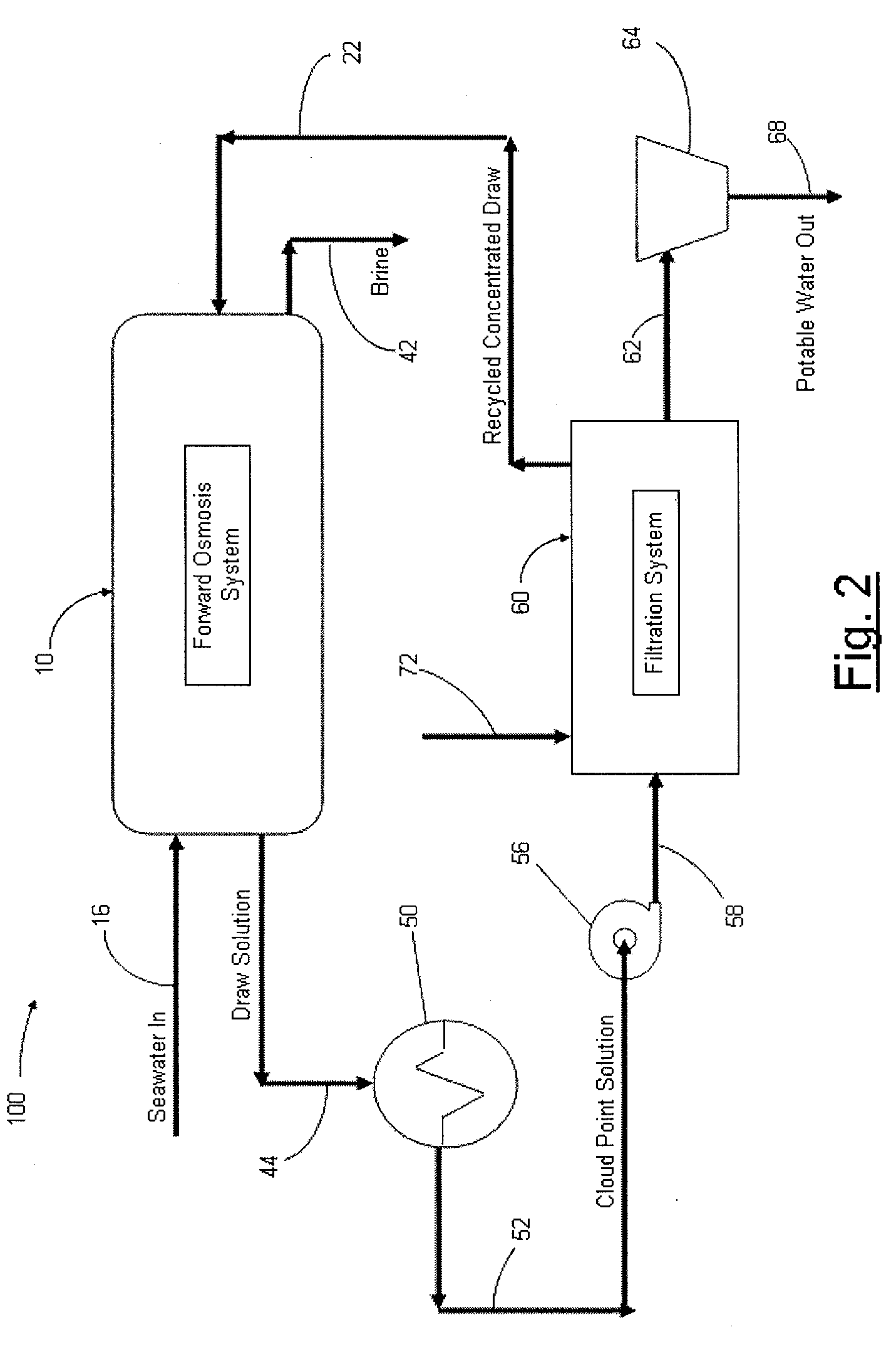Systems and methods for forward osmosis fluid purification
a technology of forward osmosis and fluid purification, applied in the direction of multi-stage water/sewage treatment, filtration separation, separation process, etc., can solve the problems of high capital investment and operating costs of ro systems, depletion of freshwater resources, and high conversion rate of seawater between 35 and 50%
- Summary
- Abstract
- Description
- Claims
- Application Information
AI Technical Summary
Benefits of technology
Problems solved by technology
Method used
Image
Examples
example 1
Determination of Cloud Point
[0069]The cloud point temperatures of cloud point solutes were determined at temperatures ranging from 10 to 70° C. and concentrations varying from 10 to 90%. Visual measurements were made at 10 C° intervals. For example, the clarity / cloudiness of the individual solutions was assessed. The data collection for one example of the cloud point solutes tested, a fatty acid-polyethylene glycol (FA-PEG) called PEG 400 ML, is shown in Table 4 below. In Table 4, “θ” represents a visibly clear solution; a single asterisk “*” represents very slight clouding; a double asterisk “**” represents more pronounced clouding; and a triple asterisk “***” represents substantial clouding. A correlation between concentration, temperatures, and cloud points can be noted, enabling a determination of the operational design points of the forward osmosis system at varying solute concentrations and temperature.
TABLE 4Organic solute PEG 400 ML in water / temperature experimentsTemp.Wate...
example 2
Cloud Point Solute Concentration
[0073]Higher concentrations of cloud point solutes in the draw solution 24 compared with the concentration of impurities in the feed solution 18 can advantageously improve recovery rates of the fluid to be purified. FIG. 3 shows osmotic pressures and water recovery rates obtained for an example forward osmosis system, from a seawater solution having an osmotic pressure of 27.2 atm. In this example, ammonium carbonate was used as the solute in the draw solution. However, as described in more detail above, because osmotic pressure depends on the number of dissolved particles in solution, but not on the identities of the solutes, similar results would also be obtained using cloud point solutes. As shown in this example, a 50% recovery of water from seawater can be achieved by using a draw solution having an osmotic pressure that is greater than twice that of seawater, while a 75% water recovery can be achieved with a draw solution having an osmotic pres...
example 3
Forward Osmosis Membranes
[0074]Suitable membranes were evaluated for use with the forward osmosis processes disclosed herein. Prior to use, all membranes were soaked in deionized water for at least 15 minutes to allow any glycerin or sodium metabisulfite to diffuse out of the membrane. Each membrane tested against selected draw solutions. The draw solutions were prepared in different weight percentages to give rise to different osmotic pressures as shown in Table 5, below, which lists certain example initial osmotic pressures for FA-PEG cloud point solutions. The membranes and draw solutions were placed in the forward osmosis system 10 shown in FIG. 1, with a feed solution concentration of 3.5% NaCI in water.
TABLE 5Osmotic Pressures for Various Solutes in WaterSolute (%)SolventOsmotic Pressure (atm)Seawater (3.5% NaCl)water27.2FA-PEG 300 (50%)water79.9FA-PEG 300 (70%)water~113.9FA-PEG 400 (50%)water~150FA-PEG 400 (75%)water~237.3FA-PEG 600 (67.5%)water~305
[0075]Each solution was te...
PUM
| Property | Measurement | Unit |
|---|---|---|
| molecular weight | aaaaa | aaaaa |
| molecular weight | aaaaa | aaaaa |
| temperature | aaaaa | aaaaa |
Abstract
Description
Claims
Application Information
 Login to View More
Login to View More - R&D
- Intellectual Property
- Life Sciences
- Materials
- Tech Scout
- Unparalleled Data Quality
- Higher Quality Content
- 60% Fewer Hallucinations
Browse by: Latest US Patents, China's latest patents, Technical Efficacy Thesaurus, Application Domain, Technology Topic, Popular Technical Reports.
© 2025 PatSnap. All rights reserved.Legal|Privacy policy|Modern Slavery Act Transparency Statement|Sitemap|About US| Contact US: help@patsnap.com



